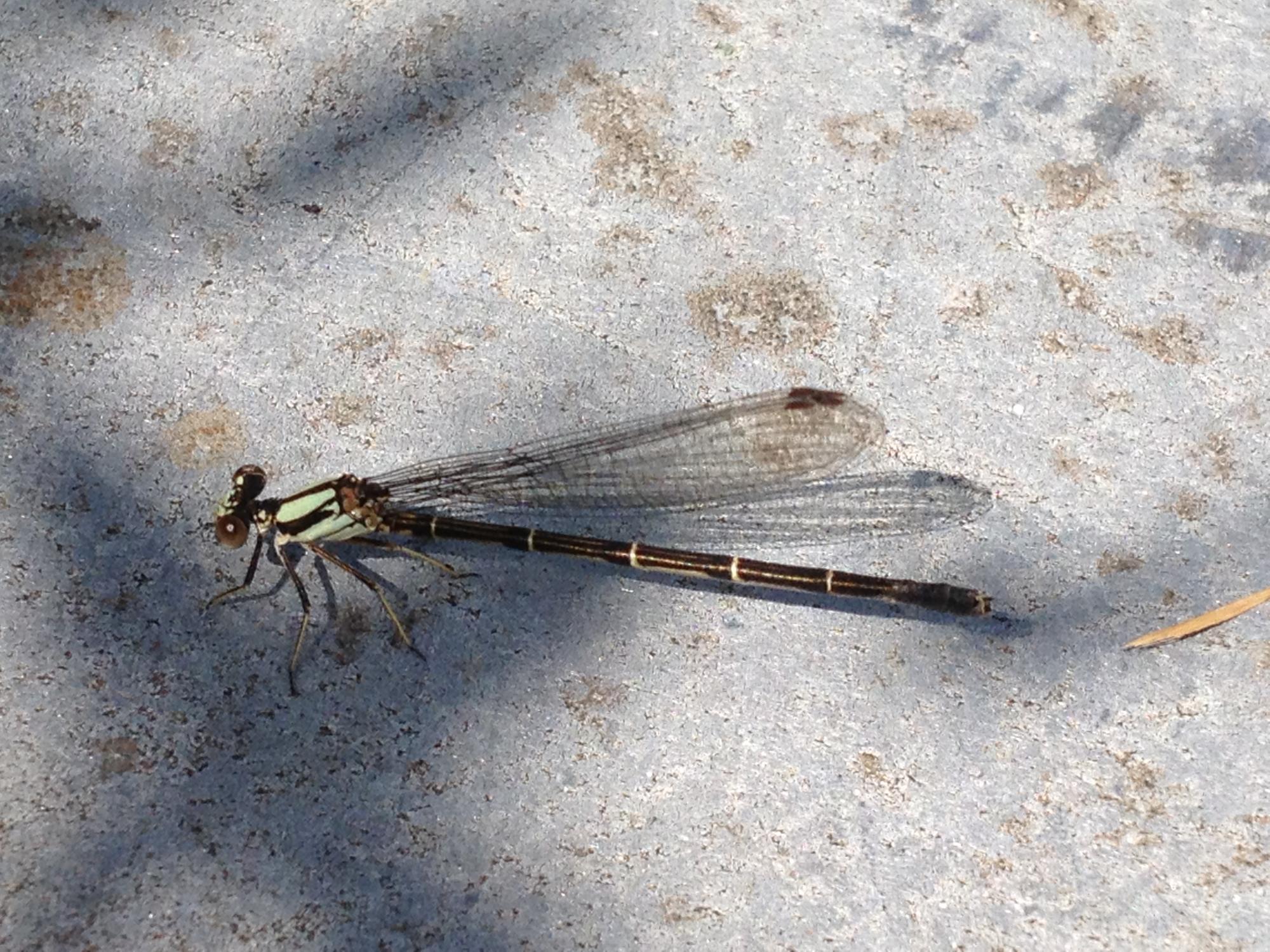BLUE-TIPPED, DUSKY, AND POWDERED DANCERS
Powdered Dancer. This is our only dancer that develops a white, pruinose coating at maturity.
Female Blue-tipped Dancer at Siebenthaler Fen. Like many damselfly species, the males and females look completely different.
Male Blue-tipped Dancer. This species typically flies from late May through early August. They prefer shaded streams and creeks.
Dusky Dancer. The males are very dark, almost solid black, except for a few blue spots on the abdomen tip. Most of my sightings of this species are from Spring Lakes Park in Bellbrook. I also see Dusky Dancers near the Caesar Creek Dam, Grant Park in Centerville, and along the Great Miami River.

Powdered Dancers are usually found near swift-moving rivers and creeks. They are abundant at the Germantown and Caesar Creek dams, along the Great Miami River, and by the creek at Grant Park in Centerville. The individual at left was photographed at Nathan Hale Riparian Reserve in Clinton County.
Mated pair of Dusky Dancers. I usually see these damselflies in late summer or autumn. My personal early date is May 24th, but the vast majority of my records are from August, September, or October.
This is a female Powdered Dancer. They are very similar to female Blue-fronted Dancers, but female Powdereds have pale yellow sides on their abdomen tips.
This is a Powdered Dancer with unusual colors. It looks like he was in the early stages of developing his pale, powdery coating.
Powdered Dancers fly from late May through early September.
Blue-tipped Dancers are widespread and abundant. I have found them at Grant Park in Centerville, Spring Valley Wildlife Area, Caesar Creek, Morris Reserve in Bellbrook, the Narrows Reserve, several of the Beaver Creek Wetlands parks, and many other locations.